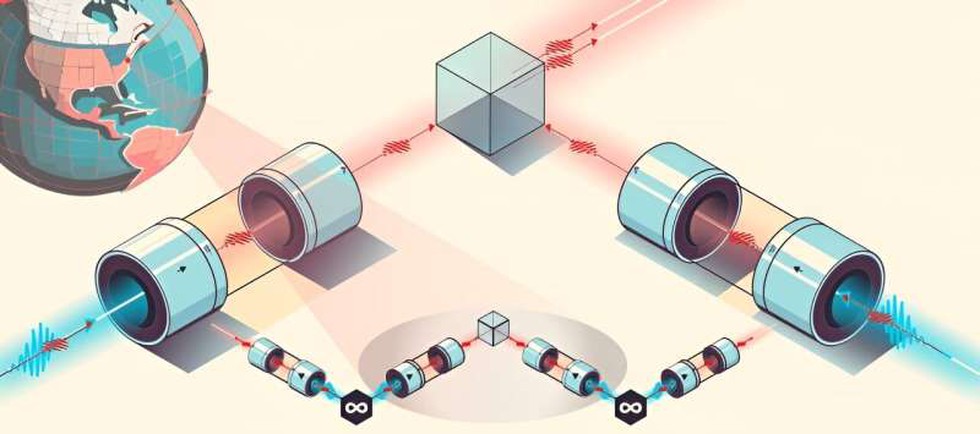Research efforts worldwide are directed towards developing a quantum internet, leveraging quantum computing and networks. This structured endeavor aims to revolutionize communication by exploiting quantum states and entanglement. The potential quantum internet promises to surpass the limitations of conventional internet systems, offering unprecedented security and services.
Stony Brook University’s Quantum Network Advancements
A team of physicists from Stony Brook University and collaborators have made strides in quantum internet development. Their recent breakthrough involves demonstrating a crucial quantum network measurement using room-temperature quantum memories. These achievements pave the way for building a quantum internet testbed.
Fundamentals of Quantum Information
The field of quantum information blends principles of physics, mathematics, and classical computing. It harnesses quantum mechanics to solve complex problems faster and ensure secure information transmission, thus outperforming classical computing methods.
Challenges in Quantum Internet Development
Despite growing interest and substantial investment, constructing a prototype quantum internet remains elusive. A significant obstacle lies in developing quantum repeaters capable of propagating quantum information and entanglement across numerous nodes and long distances, presenting a complex challenge in physics research.
Advancements in Quantum Repeater Technology
The Stony Brook research team has made progress in enhancing quantum repeater capabilities. They’ve developed and characterized room-temperature quantum memories with identical performance, a crucial feature for scaling up quantum repeater networks. These memories facilitate memory-assisted entanglement swapping, a pivotal protocol for long-distance entanglement distribution.
Room-Temperature Quantum Hardware
Unlike conventional quantum hardware operating near absolute zero temperatures, the team’s room-temperature quantum hardware significantly reduces operational costs and enhances speed. This innovation holds promise for establishing large-scale quantum networks efficiently.
Patented Quantum Storage Technology
The team has patented their approach to room temperature quantum storage and high-repetition-rate quantum repeaters, showcasing their commitment to advancing quantum network technology. This patented technology enables further experimentation and refinement of the quantum network.
Future Directions in Research
The team plans to focus on building entanglement-compatible sources and developing mechanisms to synchronize stored photons across multiple quantum memories. These endeavors are crucial steps towards achieving efficient quantum repeater systems.
Multiple Choice Questions (MCQs) with Answers:
- What is the primary objective of research in quantum computing and quantum networks?
- A) Developing faster classical computers
- B) Creating a quantum internet
- C) Enhancing social media platforms
- D) Improving satellite communication systems
- Answer: B) Creating a quantum internet
- What recent achievement has the Stony Brook University research team made in quantum networking?
- A) Building a quantum computer
- B) Demonstrating room-temperature quantum memories
- C) Inventing a new encryption algorithm
- D) Establishing a global quantum communication network
- Answer: B) Demonstrating room-temperature quantum memories
- Which field of study combines physics, mathematics, and classical computing to utilize quantum mechanics for solving complex problems?
- A) Quantum chemistry
- B) Quantum biology
- C) Quantum information
- D) Quantum engineering
- Answer: C) Quantum information
- What is identified as a key challenge in the development of a quantum internet?
- A) Achieving faster data transfer rates
- B) Building larger data centers
- C) Developing efficient quantum repeaters
- D) Expanding existing fiber optic networks
- Answer: C) Developing efficient quantum repeaters
- How do room-temperature quantum memories differ from conventional quantum hardware?
- A) They operate at higher temperatures.
- B) They are slower and more expensive.
- C) They require less energy.
- D) They are technically more challenging to network.
- Answer: A) They operate at higher temperatures.
